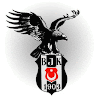Their next partner in 1902 was the French carriage maker Darracq, with Opel providing the bodies. This partnership too came to an end in 1906 when Opel had enough expertise to make their own cars. The first model had been introduced at the Hamburg Motor Show in 1902. Cars were made at the Opel plant starting with 1907, in parallel with sewing machines, until 1911 when a devastating fire burned down the factory almost completely.
When production resumed, only cars continued to be made and instead of sewing machines, Opel started making motorcycles. In 1913 they had already become the biggest car manufacturer in Germany. Except Opel didn't stop there and in 1924 introduced the first mass-production assembly line in Germany, the first model to roll out being the Opel Laubfrosch (the Tree Frog).
By now Opel cars already had a reputation for being cheap and reliable, a fact which helped the company survive inflation and still maintain the title of biggest car maker in Germany until 1928. But the depression was nearing and the Opel brothers were now in search of a partner to help them push on. That partner was the American GM who, in 1929, bought the majority of shares but left Opel all the decision-making when it came to car production.
By 1930 Opel was the largest manufacturer of cars in Europe. That and the fact that its partnership with GM gave it access to foreign markets made Opel the opportunity to expand production further and launch new models like the Opel Olympia, the first mass-produced car to have an all steel body and frame.
1994 - Astra WWII was a hard time for the Opel factory and indeed the whole company. The first car to roll out of the factory after the war was the Blitz truck, and then, much later, passenger car production resumed with the Olympia. The factories weren't fully repaired until 1956 when Opel managed to produce its 2 millionth car.
Running at full capacity Opel opened up a new plant at Bochum where a new model, the Kadett, rolled out, marking a whole era for the German manufacturer. Next, the line up was diversified to include something for the sports car afficionados, the GT. Having made these changes, Opel retained its title as biggest car manufacturer in Germany in 1972.
What followed next could easily be interpreted as Opel's attempt to take over the world. In 1963 it opened a plant in Ellesmere Port, England, then in 67 a plant in Antwerp, Belgium with GM. In the 80s there are several more plants being opened around the Globe: Zaragoza, Spain in 1982, a transmission and engine plant in Viena, Austria that same year, in 1986 (also the year the Ascona is launched) a new GM plant in Zurich, Switzerland and in 1989, after buying 50% of Saab, an GM assembly plant is opened in Turkey.
As Vectra, the most successful model is launched in 1988, Opel introduces catalytic converters on all its cars. A year later the sporty Calibra is premiered, while the brand has already made 25 million cars since it first started out. in 1991 the Kadett is retired and Astra is named as successor. The Frontera and later the Monterey will be Opel's offroad vehicles launched one year apart, starting with 1991.
2007 - GT In 2000, Opel begins production of the Agila, a microvan, the first of its kind in Germany. But the new century isn't just abot new cars, it's also about reinventing the old, as the new generation of the Corsa is unveiled in 2001 and the second generation Astra. The sport market segment will be filled by the Speedster (2002) and the Tigra (2004).
Opel has made a point in staying ahead of the game and in bringing quality to the masses at affordable prices. Lately though, it seems that Opel might be trying to break into a whole new class, one with the other German heavy contenders, Mercedes, BMW and Porsche, where luxury is paramount, with the introduction of the 2008 Insignia.
Reference: www.autoevolution.com














0 yorum:
Post a Comment